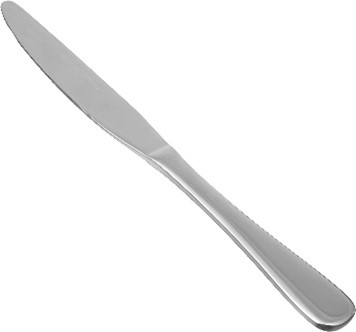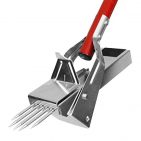by Stan Logan | Jan 20, 2021 | Weeds
What are your thoughts when you hack at a weed with a hoe? How about when you plunge a weeder into the soil and penetrate the tape root of a plant you don’t appreciate. Have you ever paused when you were about to grab a plant by the neck and yank it out of the soil it depends on for life? When you use a propane torch to cook and then scorch a solitary weed and hear the popping of the seeds that would otherwise provide future generations of that plant, how are you feeling? Have you ever stopped to think that these plants that you so fervently pursue and torture with Roundup are simply trying to survive—to survive and continue the lifeline of their existence?
I ask you, “Where’s the empathy?” . . . Not here . . . But sometimes . . . . . . .
by Stan Logan | Jan 19, 2021 | Weeds
Generally it is a pleasant experience being on a gardening team. I know Daisy would back me up on this concept. But there are times when disagreements can arise—specifically, what plants need to be eradicated, and which are left to survive—what’s a weed and what’s not. You have heard the saying that it is easier to ask for forgiveness than to ask for permission. I have found that this axiom doesn’t work well when weeding in the garden. You see, once a plant is extracted, survival upon replacement is seldom successful. I have found that saying “You should have been watching what I was doing!” does not go over well. Or “It looked like a weed to me” doesn’t fare well either. I have found that frequent asking of permission has proven to the least painful option when weeding. I’m just sayin’.
Stan

by Stan Logan | Oct 30, 2020 | Garden tools, Weeds
Do you remember that day in high school biology when you dissected a night crawler? If you don’t, let me tell you that it is an earthworm about 7 inches long. You used your scalpel to carefully cut in incision in the dorsal surface at the anterior end. Then using a probe, you scratched at the tissue of the wall segments and pulled back and pinned the body walls to the wax of the dissection tray. Further scratching with the probe finally revealed the brain which consisted of two connected tiny white lumps lying on top of the esophagus. We called this process teasing, and I am reminded of my first dissection back in 1957 whenever I am fighting the oxalis growing in my lawn. I only have a few spots where oxalis insists on returning. Several years ago. I removed 8 square feet of lawn that was hopelessly infested with this weed. I thought I had eradicated it, but 2 or 3 areas continue to be a problem.
So weekly, after each mowing, I get down on my hands and knees and use a teasing technique to remove any oxalis before it has a chance to go to seed. The tool I use is a dinner plate knife because is it rigid, narrow, and had a dull rounded end. I grab the oxalis by the neck (not really the neck) and pull gently. At the same time, I tease (scratch) the soil where I figure the root is located. Generally. the root gives way and another plant bites the dust (so to speak).
I figure that I have a right to tell you about this experience because it does involve a tool, albeit a tool with very limited use. By the way, this is also the tool I use to spread peanut butter in the rat traps that I try to keep baited year-round.
I guess the one question remains—will I be able to completely tease the oxalis to death—or will it outlast me and tease me to death?
Stan, The Tool Man
P.S. My editor says the last line is a little grim.

Table knife as garden tool

by Stan Logan | Jun 22, 2020 | Weeds
Here is tool you may find useful. If you have a significant weed population that consists of a lot of isolated large weeds, this may be your baby. The way this tool works is that you stab the tines into the soil in front of the weed. You may push the tool deeper with your foot if necessary.

Weed Popper
Then, by pressing the lever at the back of the tool, the tines will pivot upwards and lift the weed with its root out of the soil. The Weed Popper would not be useful if your weeds are growing among valued plants, nor would you use it to remove weeds in a lawn. But let’s say you have a large property that you have protected with a generous application of mulch. Isolated weeds eventually will appear and using this tool will keep you off your knees and perhaps be easier to use than a hoe. If you google “weed popper” you can watch a video showing its use.
Oh great! It’s at this point that I tell you where to buy and how much. Guess what? As of 6/22/20, this tool is unavailable.
All right—let me give you another option:

The Fiskars 4-Claw Weeder works in a different fashion. You stab the tool over the center of a weed and press it farther with your foot. When you pull back on the handle, the 4 claws close on the root of the weed and yank it out of the soil. I have had one of these weeders for well over a year and never used it. I got it free at a garage sale. I have no large weeds, so I went over to my next door neighbor and attacked the dandelions in his lawn. I found it was extremely effective. After the weed is extracted, you slide the orange handle down and the weed pops right off. The only problem is you must hit the center of the weed in order to grab the root. I have to admit that it was fun pulling out these weeds. It was difficult to stop, but when I saw a path of dandelion carcasses all over, I realized that I had a lot of evidence to clean up. The advantage this tool has over the one above is that the weed doesn’t have to be isolated.
If you also have fun weeding, I think this may be the ideal tool to increase your joys in the garden.
The Fiskars 4-Claw Weeder is available at Amazon Prime for $41.48 or at Walmart for a few dollars less.
Happy weeding!
Stan The Tool Man
by Stan Logan | Jun 3, 2020 | Weeds
It is hard enough keeping up with the invasion of weeds in your garden without having plants conspiring against you. I am currently trying to eradicate both spurge and moss from the garden. Since both of these terrorists are tiny and prone in development, they have found an ally in baby tears. 45 years ago we bought a 4 inch pot of baby tears. Do I need to tell you more? For decades it has been a challenge keeping baby tears confined. Now to confound my frustration, they have buddied up with not only the moss, 2 species of spurge, but even the Johnny Jump-Ups have joined the conspiracy. My response to these chums is “Burn baby, burn”! You would think that the word would get out and the baby tears would stop there conniving behavior. But, no—the battle ensues on a daily basis–and will until I run out of gas.
Oh, by the way, would you like a clump of baby tears?
Stan
by Stan Logan | May 13, 2020 | Weeds
For some reason this year my garden has been under an intense attack of moss plants. I suppose the most likely cause is the drought we’ve experienced. Perhaps moss plants sense a coming doom and have sent out a flood of spores. Normally I blame unusual weed seed dispersal on my leaf blower, but moss plants are appearing where that cause is unlikely. What I’ve decided is the most likely hypothesis is the fact that moss plants are growing on the roof—particularly in the shade of our huge hackberry tree—and the spores are being spread throughout the garden by the wind.
I googled moss on roofs and learned that not only will moss plants tend to lift asphalt shingles, but also causes them to deteriorate. More research revealed solutions. There is a product called “Moss Out” that is designed to kill moss on roofs. I thought $20 for a bottle was a little much, but I bit the bullet. Before I applied a diluted solution, I spent two days scraping as much moss off the shingles that I could. The most effective tool for this task was my trusty 2 x 5 trowel that I keep urging you to buy. Then, using a hose, I washed the debris off the roof and collected the runoff in a rain barrel. This seemed to be far more logical than using my leaf blower. The moss plants are supposed to be first wet anyway. I then applied the solution.
I checked the roof several days later, and frankly, was not impressed with the results. Perhaps the moss was deader than it looks. It’s not as though it’s going to wilt or something. Not to be deterred, I moved on to the next idea: Apparently the metal zinc is toxic to moss plants. I have ordered a 50-foot roll of zinc metal sheeting. When it arrives, I will install it along the ridgeline so the when it rains, the dissolved zinc will flow over the moss plants and kill them. This is supposed to be a slow process and results may not appear for several months during the rainy season, but I am patient as well as persistent.
If you have experienced a similar attack of moss in your garden, you might simply need to look above you to find the source of the invasion.
Stan, The Moss Man
P.S. My wife insists on a disclaimer that I am not encouraging you to get up on your roof. You might instead hire a professional moss scraper instead.



